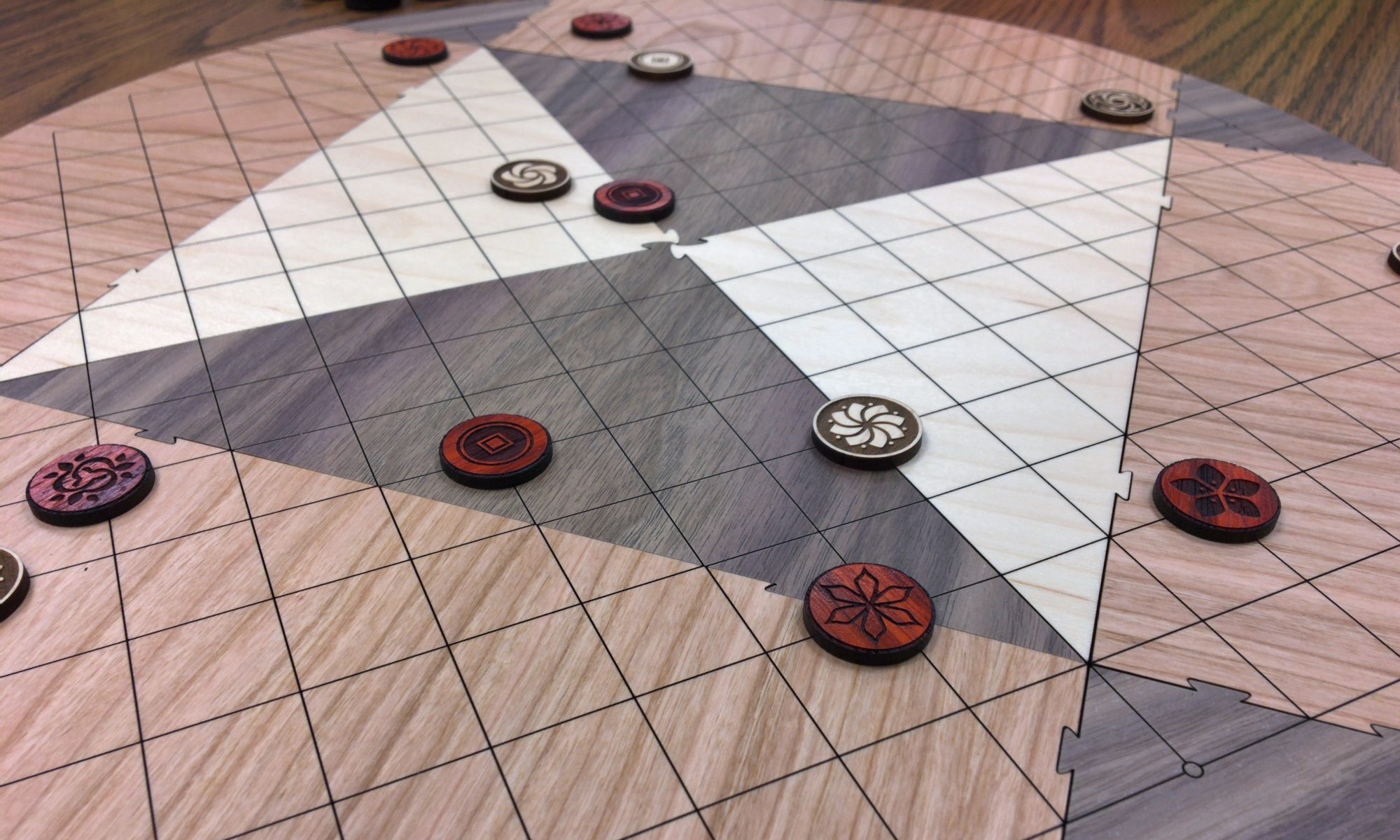Nature’s Grove: Respite is a Solitaire Pai Sho game.
Play Nature’s Grove: Respite online at The Garden Gate.
Goal: Form as many Harmonies and Disharmonies as possible, creating balance between them on the board by having the same number of Harmonies as Disharmonies. (Disharmonies can be formed on the board, unlike normal Skud Pai Sho).
Tiles: Put all of one player’s tiles in a bag you can draw tiles from randomly. Tiles have the same properties as they do in Skud Pai Sho, with the following changes:
- The Orchid tile forms Disharmony with all Flowers (therefore mirroring the White Lotus).
- Accent Tiles don’t have any effects on the board except for taking up space and getting in the way.
Note: Reference the Harmony Ring for which tiles form Harmony and Disharmony – tiles form Harmony with the two on either side of it and Disharmony with the opposite tile.
Play: On a turn:
- Draw a tile randomly from the bag.
- Place the tile on the board, following the Tile Placement Rules:
- Flower Tiles must be placed on the board so they are in Harmony or Disharmony, unless that is not possible.
- If there are no possible points to place a Flower Tile where it would be in Harmony or Disharmony, the tile may be placed anywhere.
- When Flower Tiles are placed, they must be in a Neutral or matching-colored Garden (so, no White flowers in the Red Gardens. The Lotus and Orchid are not restricted from being placed in any Garden). Treat Gates as Neutral Garden points on the board.
- Accent Tiles must be placed 2 or less spaces away from being completely inside a Red or White Garden.
- (Optional: You could also play that a turn allows you to move one tile after drawing and placing. Follow normal Skud Pai Sho movement rules.)
Keep playing turns until there are no tiles left in the bag, which is the end of the game. Calculate your score at the end of the game.
Scoring: There are two ways to calculate your score.
- Simple Score: Count the number of Harmonies on the board and the number of Disharmonies on the board. Whichever number is less is your Simple Score.
- Full Score: For each Harmony, count the points on the board that are part of the Harmony, including the points the tiles are on, and add all these up to get your Harmony Points. Do the same for each Disharmony to get your Disharmony Points. Whichever number is less is your Full Score.
Optional Rules:
- Play with all tiles: Play with a full 2-player set of tiles for a longer game and an extra challenge. To play online with twice as many tiles, add the Double Tiles game option when starting your game – when playing online with double tiles, an extra White Lotus tile is included so that forming the White Lotus Gambit is possible. Make forming the White Lotus Gambit your goal!
- 2-Player: Similar to playing with a full 2-player set, but players play their own tiles, and players alternate placing tiles. Try to get the best score with the tiles combined, but the player whose tiles contributed the most points wins!
